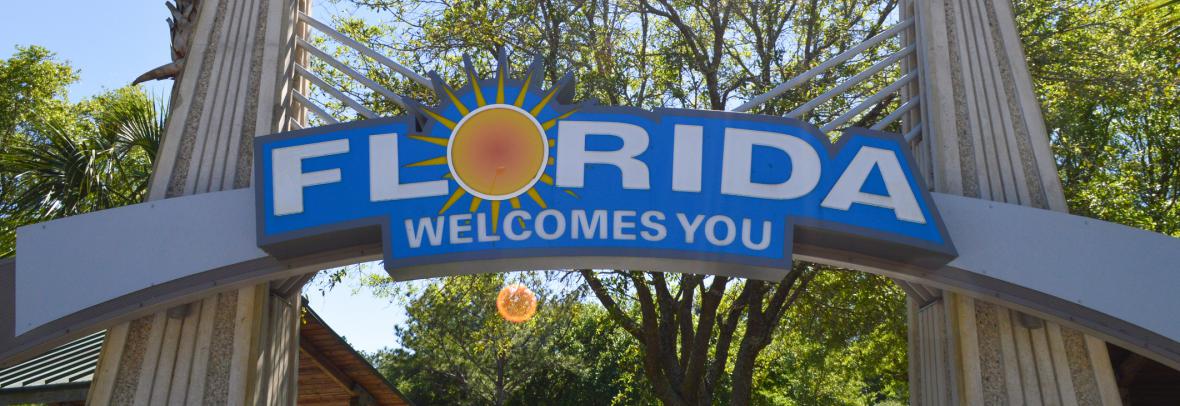
Florida Home to Fastest Growing Metro Areas
Florida’s population grew exponentially from 2022 to 2023, particularly in the large metro areas, underscoring the trend of widespread population growth in the South, the U.S. Census Bureau said.
WASHINGTON – Florida was home to four of the nation’s top five fastest-growing metropolitan statistical areas and three of the top 10 that gained the largest number of people from 2022 to 2023, reflecting continued population growth across the South.
The increases in Florida — the nation’s third most populous state — were fueled by rapid growth in select metro areas in the state during that period.
The population growth in Florida’s metro areas underscores a larger trend of widespread population growth across the South, the nation’s fastest-growing region and site of all of the top 10 fastest-growing U.S. metro areas from 2022 to 2023.
Among them:
- Wildwood-The Villages – known for its large retirement community – whose population rose nearly 5% to 151,565, making it the nation’s fastest-growing metro area.
- Lakeland-Winter Haven, the second fastest-growing metro area, up nearly 4% to 818,330.
- Ocala and Port St. Lucie, the fourth and fifth fastest-growing metro areas, respectively. Their populations increased by more than 3% each to 409,959 and 536,901.
Florida’s more populous metro areas ranked among the nation’s top 10 in numeric population gains.
Three metro areas collectively added nearly 150,000 residents from 2022 to 2023: Orlando-Kissimmee-Sanford (54,916); Tampa-St. Petersburg-Clearwater (51,622); and Miami-Fort Lauderdale-West Palm Beach (43,387) — the fourth, fifth and 10th largest numeric gaining metro areas nationwide, respectively.
A surge in the South
The population growth in Florida’s metro areas underscores a larger trend of widespread population growth across the South, the nation’s fastest-growing region and site of all of the top 10 fastest-growing U.S. metro areas from 2022 to 2023. The growth continued a pattern already clear the previous year when eight of the 10 fastest-growing metro areas were in the South (Figure 2, Tables 1 and 2).
Several metro areas in the South continued to have large population gains: nine of the 10 metro areas that gained the most people between 2022 and 2023 were in this region, same as the previous year (Tables 3 and 4).
Texas was home to four of the 10 metro areas that added the largest number of people: Dallas-Fort Worth-Arlington (152,598); Houston-Pasadena-The Woodlands (139,789); Austin-Round Rock-San Marcos (50,105); and San Antonio-New Braunfels (48,071). These four metro areas collectively gained more than 390,000 people between 2022 and 2023, close to the approximately 413,000 people they gained the previous year.
Atlanta-Sandy Springs-Roswell in Georgia and the Charlotte-Concord-Gastonia metro area that straddles both North Carolina and South Carolina also were among the top 10 numeric gaining metro areas during both periods.
Florida metro area Miami-Fort Lauderdale-West Palm Beach replaced Tennessee metro area Nashville-Davidson-Murfreesboro-Franklin among the top 10 numeric gainers.
During both periods, Phoenix-Mesa-Chandler in Arizona was the only metro area among the top 10 gainers that wasn’t in the South.
What’s behind the growth
U.S. migration patterns played a significant role in the South’s population growth. Many people moved to this region, contributing to its overall positive net domestic migration (more people moving in from the rest of the United States than moving out to other parts of the United States). From 2022 to 2023, 28 of the top 30 metro areas with the highest positive domestic migration were in the South.
The growth of Florida’s metro areas between 2022 and 2023 was also driven by positive net migration—the sum of net domestic and net international migration — which includes movers from within the United States and other countries. Miami-Fort Lauderdale-West Palm Beach was the only Florida metro area to experience negative net domestic migration between 2022 and 2023. Some of these Florida metro areas grew despite experiencing natural decrease (when the number of deaths outnumbers births).
Both natural increase and positive net migration fueled growth in Texas’ largest numeric-gaining metro areas.
The Dallas-Fort Worth and Houston metro areas led the nation in the number of new residents during this period due to a large influx of domestic and international migrants as well as more births than deaths.
Source: U.S. Census Bureau
© 2024 Florida Realtors®
